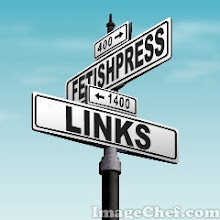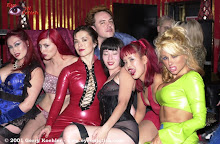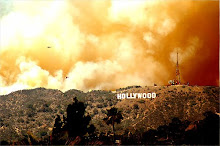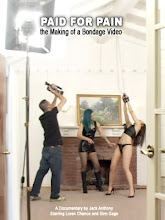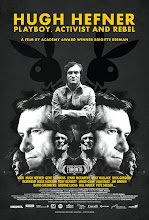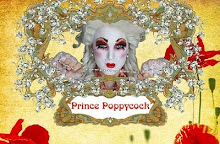The job came with certain unassailable perks. When Raquel Pomplun was anointed Playboy's 2013 Playmate of the Year, the 25-year-old model knew she could expect a Playboy Mansion luncheon hosted by Hugh Hefner, a tomato-red 2014 Jaguar convertible and $100,000 in congratulations cash. Pomplun didn't anticipate a detour into contemporary art.
Hours after the ceremony, the Playmate found herself whisked from the mansion to Bungalow One at West Hollywood's louche Chateau Marmont, where Playboy staff politely asked Pomplun to strip. Not in the service of another pinup pictorial, but for chaste portraits by fine arts photographer Malerie Marder. After being interviewed (clothed) by video artist Alex Israel and mingling with a cocktail crowd of fashionistas and art-world mavens, the model disrobed again — to roll in paint and press her naked body against canvases for multimedia artist Aaron Young.
"At first I was like, 'Why did I say yes to this?'" Pomplun says. "But if you look back to the '60s, Playboy has always been a big supporter of art and abstract artists. They told me, 'We want to bring that back.' To try to make the brand what it was with what we have nowadays. I thought, 'Why not?'"
Turns out that as Playboy approaches its 60th anniversary, the magazine is drawing upon that past to try to return to the cultural forefront. After decades of ebbing influence, declining circulation (from a 1972 peak of more than 7 million issues distributed monthly to 1.25 million today) and, worse still, a lowering in August by Standard & Poor's of Playboy Enterprises Inc.'s corporate credit rating from a B-minus to CCC-plus — junk bond status — Pomplun's dynamic collision of eroticism and fine art represents a key piece of Playboy's game-changing efforts.
In an era when many Playboy readers have grown up viewing online pornography and a monthly title featuring nude women can seem downright antiquated, the men's lifestyle magazine is in the midst of an editorial reboot.
"You could tell by looking at it, the carpets had gotten a little bit musty," says Playboy's editorial director, Jimmy Jellinek. "We made a conscious decision two years ago that we needed to make some profound changes to the aesthetic and construction of the magazine."
Playboy's DNA as a handbook for the urban male is still intact, Jellinek insists. "That became obfuscated," he says, "within layers of outmoded design, photography that had become passé and covers that had become cluttered."
Spurred by a global brand tracking study that benchmarked Playboy's most valuable assets — Playmates, the bunny logo, the mansion and, not least, its founder Hefner — the company made sweeping changes to the flagship U.S. edition. It now functions as the "brand ambassador" for Playboy Enterprises, whose holdings include a TV station, digital network, online division, radio station and an apparel and collectibles group as well as nearly 30 international editions of the magazine that combine to bring in an annual revenue of $135 million.
The most immediately apparent change is referred to as the "three Gs": God Given Gorgeous. That is, nude models notably absent the kind of double-D surgical enhancements that came to be associated with the magazine over the last two decades.
"What we heard repeatedly is, our audience is much more female than we thought," Playboy Chief Executive Scott Flanders says at a time when approximately 1.1 million of the magazine's 5.6 million monthly readers are now women. "[They] wanted us to move away from obvious artificiality."
Since hiring art director Mac Lewis from fashion heavyweight V magazine in late 2012, adding a batch of new staff photographers and replacing long-tenured editors with fresh recruits, the magazine boasts a more sophisticated look and tone. The course change is literally and figuratively intended to catapult Playboy out from under the mattress and onto the coffee table. It's a deliberate pivot away from the scandal mavens, reality TV stars and pro wrestlers Playboy put on its covers until recently.
To wit: the July/August 2013 issue cover features 25 synchronized swimmers forming the rabbit head logo, a conscious throwback to the kind of concept-driven, art-directed aesthetic of Playboy's 1960s-'70s golden age.
"Taking a step back and being more art than porn is a very smart move," says Samir "Mr. Magazine" Husni, director of the Magazine Innovation Center at the University of Mississippi. "Just making the magazine less obnoxious makes it easier to pick up and buy."
"You cannot stay static," says Hefner, 87, who abides as Playboy's editor in chief and has personally blessed the title's revamp.
Seated in his wood-paneled study at the mansion in signature smoking jacket and pajamas, Hef quietly contemplated the magazine's continuing evolution.
"You have to change. At the same time," he adds, "if one were going to find a touchstone in terms of what's happening now, one would have to go back to the very beginning of the publication."
In June, along a stretch of Highway 90 outside Marfa, Texas, a neon bunny logo went up atop a 40-foot pole flanked by a '72 Dodge Charger. The installation, by Richard Phillips and commissioned by Playboy's creative director for special projects, Neville Wakefield, is the magazine's highest-profile art tie-in to date. According to Phillips, who shows with the powerhouse Gagosian Gallery, the muscle car represents American power and idealism; its vintage, a nod to the zenith of Playboy's readership. Marfa stands as a far-flung art destination, put on the map by Minimalist artist Donald Judd.
Taken together, the signifiers provide a handy metaphor for Playboy's "everything old is new again" approach.
"When Playboy was at its strongest, politics, literature and eroticism were working together — that made the magazine powerful," Phillips explains. The installation "is about looking at these elemental and fundamental qualities, then setting up an off-site focal point to generate a starting point for new energy."
Wakefield, an influential writer-curator who became involved with Playboy after hosting an extravaganza for the magazine in 2010 at Art Basel Miami Beach, acknowledges that Playboy and the niche contemporary art world make strange bedfellows. But as far back as 1967, the title was commissioning works by pioneering modern artists including Salvador Dalí, Andy Warhol and Ed Ruscha.
"Although it seems like a weird thing to connect Playboy with this esoteric audience, it's really continuous with its original mission," Wakefield says. "It was always a bit of a Trojan horse, offering nudity but providing in-depth writing. I think it can do something similar with these radically different audiences and generations as well."
The endgame is to create an aspirational extreme.
"At the top of the pyramid is the super influencer crowd," Jellinek says. "The hybrid between fashion, art and celebrity, Russian hedge fund oligarchs, supermodels — we want those people engaged with the Playboy brand because they are the living, breathing manifestation of the Playboy dream. Then it can start to trickle down."
Bettina Korek, who produces public art initiatives and helps create cultural partnerships under the auspices of her Los Angeles-based company ForYourArt, credits Wakefield — who enlisted such A-list art stars as Cindy Sherman and Richard Prince to reinterpret the centerfold for a recent feature — with persuading the art community to rally around the magazine's efforts to embrace higher culture.
"What's great about the way Playboy approaches commissioning work is, they're taking the role as a patron rather than creating one-offs, projects that have authentic connections to what is happening in the art world," Korek says. "It provides an opportunity to rub up against the outer layer of popular culture that's very compelling for artists."
Playboy is hardly the first global brand to draft in the art world's cultural wake. Louis Vuitton extensively collaborated with Japanese pop artist Takashi Murakami. Levi's is helping bankroll artist Doug Aitken's "Station to Station" art train. But will Playboy's shift from trashy to classy pay off in new readers and revenue?
Melissa Reekers, newsstand buyer for West Hollywood's taste-making Book Soup, notices that Playboy's conceptual covers so far aren't as popular as the quasi-celebrities showcased until recently.
"When they used to put people like Jenny McCarthy or Lindsay Lohan on the cover, they would fly out of here," Reekers says. "But now, sales have kind of died down."
It should be pointed out that 95% of Playboy's readers are subscribers, not newsstand buyers. Still, the magazine's page count shrunk by more than 11% from the first quarter of 2012 to the first quarter of this year, while ad revenue declined by 13.5%, according to Publishers Information Bureau.
And the Standard & Poor's debt downgrade arrives just four months after Playboy Enterprises took on $185 million in loans — on the heels of licensing deals that didn't close in the first half of this year. The CCC-plus rating can indicate that a company is at elevated risk of violating its debt agreements because of decreased earnings.
But Playboy executives insist the company is in good financial health. Company spokesman Jeff Majtyka says in a statement, "While the timing of closing new licensing deals in our pipeline is prone to shift and can affect our results quarter to quarter, we remain in full compliance with our covenants."
Flanders, who followed Christie Hefner, the founder's daughter, as CEO in 2009, when Playboy was losing about $12 million a year, took the company private in 2011. Since then, Playboy has consolidated its editorial operations from Chicago, London and New York under the roof of its sprawling Beverly Hills offices, and shed 75% of its employees over the last four years. The porn-skewing Spice Channel and other digital properties were sold along with more than 70 apparel licenses that were, as Flanders puts it, "appealing to the lowest demographic."
In addition, the magazine reduced its annual issues from 12 to 10 and outsourced advertising, marketing, circulation and other key operations.
"We are tracking toward breaking even with the U.S. magazine for 2014," says Flanders. And ad sales for upscale fashion designers and cars are on the uptick.
Playboy is reaching out to readers via such zeitgeist-y online platforms as Vine, Tumblr and Instagram. But its CEO remains bullish on Playboy's old-media foundation. "We'll stop publishing the U.S. magazine in print over my dead and buried body," Flanders says.
The 60th anniversary issue appears set to capture the buzzy overlap of art, celebrity and sexytime while emphasizing Playboy's upmarket tilt. Ending months of speculation in the fashion press, Jellinek confirmed to The Times that British supermodel Kate Moss is set to appear on the magazine's January/February double issue cover, appearing nude in a pictorial by fashion photography tandem Mert and Marcus.
"You're talking about the most important supermodel of the past 20 years," Jellinek says. "This creates a heat for the brand globally. It started with Marilyn Monroe on the cover of Playboy 60 years ago, an icon for her time. Now we've got Kate Moss!"
chris.lee@latimes.com
http://www.latimes.com/entertainment/envelope/cotown/la-et-ct-playboy-reboot-20130915,0,7700978,full.story


